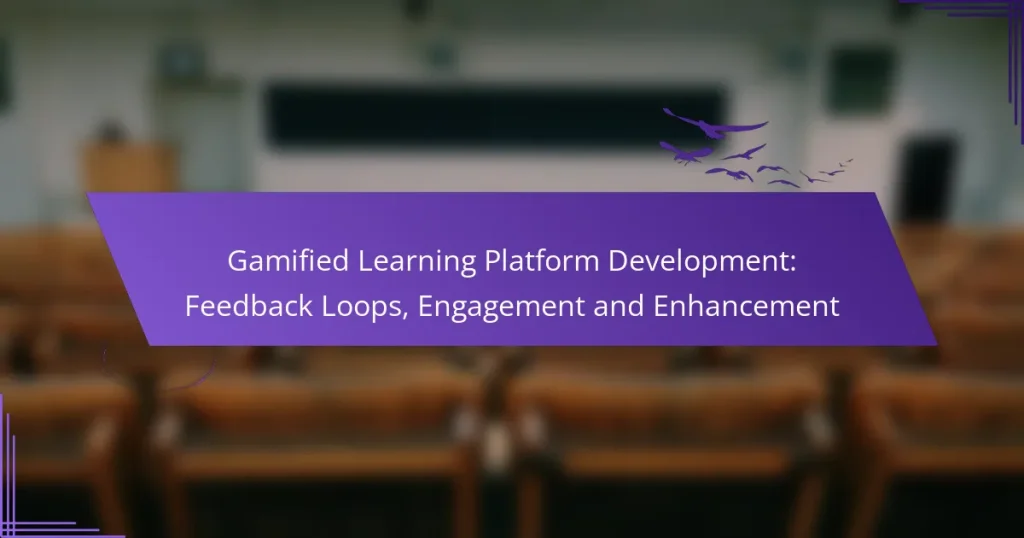Gamified learning platforms revolutionize education by integrating game-like elements that boost student engagement and motivation. By utilizing rewards, interactive challenges, and effective feedback loops, these platforms create immersive experiences that cater to individual learning needs and enhance retention.
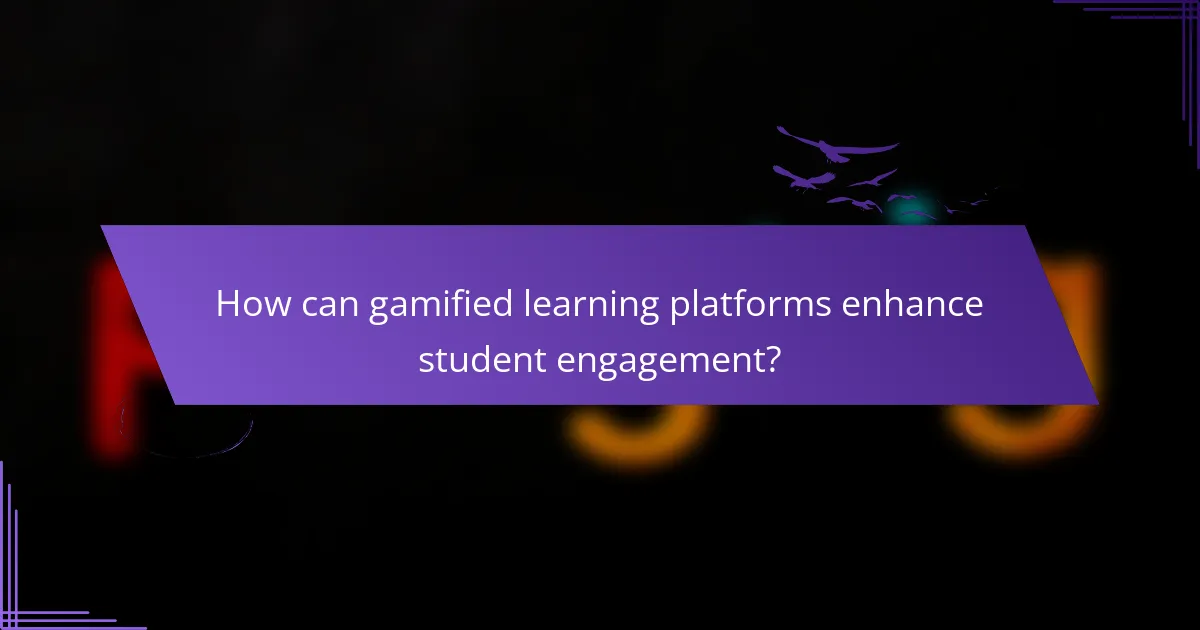
How can gamified learning platforms enhance student engagement?
Gamified learning platforms enhance student engagement by incorporating game-like elements that motivate learners to participate actively. These platforms leverage rewards, interactive challenges, and real-time feedback to create an immersive educational experience.
Increased motivation through rewards
Rewards play a crucial role in motivating students within gamified learning environments. By offering points, badges, or unlockable content, learners are incentivized to complete tasks and achieve learning milestones. This system not only boosts engagement but also fosters a sense of accomplishment.
To implement effective reward systems, consider using tiered rewards that cater to different achievement levels. For instance, beginners might earn simple badges, while advanced learners could unlock exclusive content or advanced challenges. This approach keeps all students motivated, regardless of their skill level.
Interactive challenges and quizzes
Interactive challenges and quizzes are essential components of gamified learning platforms that promote active participation. These activities encourage students to apply their knowledge in a fun and engaging way, making learning more memorable. Incorporating elements like time limits or competition can further enhance the excitement.
When designing challenges, ensure they are appropriately challenging but achievable. A mix of difficulty levels can cater to diverse learners, allowing everyone to find something that suits their abilities. Regularly updating challenges can maintain interest and encourage continuous learning.
Real-time feedback mechanisms
Real-time feedback mechanisms are vital for reinforcing learning and keeping students engaged. Immediate feedback on quizzes and challenges helps learners understand their mistakes and correct them promptly, which is crucial for effective learning. This instant gratification can significantly enhance motivation.
To maximize the benefits of feedback, consider integrating analytics that track student progress over time. Providing personalized insights can help learners identify areas for improvement and celebrate their successes, fostering a growth mindset. Additionally, ensure that feedback is constructive and encourages further exploration of the subject matter.
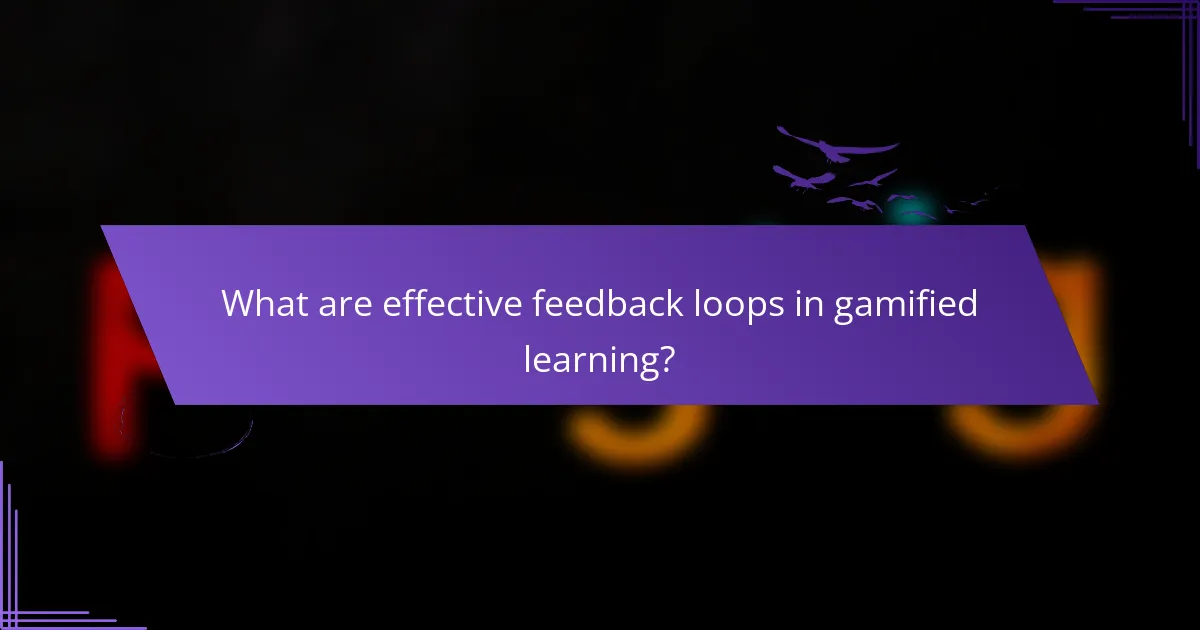
What are effective feedback loops in gamified learning?
Effective feedback loops in gamified learning are mechanisms that provide learners with timely and relevant information about their performance, enabling them to adjust their strategies and improve their skills. These loops enhance engagement and retention by making learning more interactive and responsive to individual needs.
Continuous assessment through quizzes
Continuous assessment via quizzes allows learners to gauge their understanding in real-time. Frequent quizzes can be designed to adapt in difficulty based on previous performance, ensuring that learners are consistently challenged without becoming overwhelmed.
For instance, incorporating short quizzes after each module can help reinforce knowledge and provide instant feedback. Aim for quizzes that take no more than 5-10 minutes to complete, allowing for regular check-ins without disrupting the learning flow.
Peer reviews and collaborative feedback
Peer reviews foster a collaborative learning environment where students can provide and receive constructive feedback. This approach not only enhances understanding but also builds critical thinking and communication skills.
To implement peer reviews effectively, establish clear guidelines and rubrics to ensure that feedback is specific and actionable. Encourage students to review at least two peers’ work to promote diverse perspectives and deeper engagement with the material.
Adaptive learning pathways
Adaptive learning pathways tailor the educational experience to individual learner needs, preferences, and performance. By analyzing data from assessments and interactions, these pathways adjust content delivery and learning activities accordingly.
For example, if a learner struggles with a particular concept, the system can provide additional resources or alternative explanations. This personalized approach can significantly enhance motivation and retention, as learners feel supported in their unique journeys.

Which gamification elements drive user retention?
Key gamification elements that enhance user retention include leaderboards, progress tracking, and personalized learning experiences. These features create an engaging environment that motivates users to return and continue their learning journey.
Leaderboards and competition
Leaderboards foster a sense of competition among users, encouraging them to improve their performance. By displaying rankings based on points or achievements, users are motivated to engage more frequently to climb the ranks.
To maximize effectiveness, ensure that leaderboards are updated regularly and reflect relevant metrics. Consider segmenting leaderboards by different criteria, such as weekly performance or specific challenges, to maintain engagement among various user groups.
Progress tracking and achievements
Progress tracking allows users to visualize their learning journey, which can significantly enhance motivation. By showing milestones and completed tasks, users can see how far they have come and what remains to be accomplished.
Incorporating achievement badges or certificates can further incentivize users. These tangible rewards serve as recognition for their efforts and can be shared on social media, promoting both personal accomplishment and the platform itself.
Personalized learning experiences
Personalization tailors the learning experience to individual user preferences and needs, making it more relevant and engaging. By adapting content based on user performance and interests, learners are more likely to stay engaged and retain information.
Utilize data analytics to identify user behavior and preferences, allowing for dynamic adjustments to learning paths. Offering choices in topics or formats can also enhance user satisfaction and retention, as learners feel more in control of their educational experience.

What platforms are best for developing gamified learning?
Several platforms excel in developing gamified learning experiences, each offering unique features tailored to different educational needs. Popular choices include Moodle, Edmodo, and Classcraft, which provide various levels of customization, social interaction, and immersive experiences.
Moodle for customizable learning
Moodle is a highly flexible learning management system (LMS) that allows educators to create tailored gamified experiences. Its open-source nature means you can modify it extensively to suit specific learning objectives, incorporating elements like badges, leaderboards, and interactive quizzes.
When using Moodle, consider the user interface and the extent of customization needed. While it offers great potential, the setup can be complex, requiring some technical knowledge. Start with predefined templates and gradually introduce gamification elements as you become more comfortable.
Edmodo for social learning
Edmodo emphasizes social learning, making it ideal for fostering collaboration among students. Its gamified features, such as badges and rewards for participation, encourage engagement and motivate learners to interact with peers.
To maximize Edmodo’s potential, focus on creating a community atmosphere. Utilize discussion boards and group projects to enhance social interaction. However, be cautious of over-reliance on gamification; ensure that educational content remains the primary focus to avoid distractions.
Classcraft for immersive experiences
Classcraft transforms the learning environment into an immersive game, where students can create characters and embark on quests related to their studies. This platform integrates role-playing elements, making learning more engaging and fun.
When implementing Classcraft, set clear educational goals and align quests with curriculum standards. Monitor student progress and adjust challenges to maintain engagement. Be aware that while immersive experiences can enhance learning, they may require significant time investment to set up effectively.
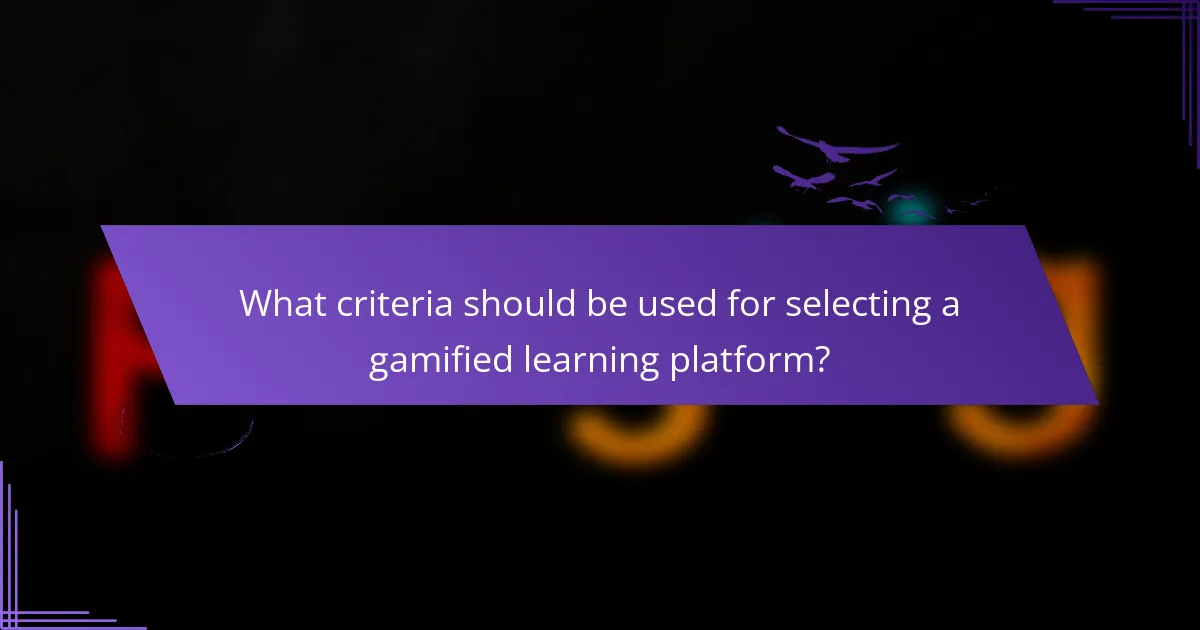
What criteria should be used for selecting a gamified learning platform?
When selecting a gamified learning platform, focus on user experience, integration capabilities, and scalability. These criteria ensure the platform meets educational goals while providing a seamless experience for both learners and administrators.
User interface and experience
The user interface (UI) and overall experience are crucial for engagement in a gamified learning platform. A clean, intuitive design encourages users to interact with the content and participate actively. Look for platforms that offer customizable interfaces to match your branding and educational needs.
Consider usability testing to evaluate how easily users can navigate the platform. Features like responsive design, clear navigation menus, and engaging visuals can significantly enhance user satisfaction and retention.
Integration capabilities with existing systems
Integration capabilities are essential for ensuring that the gamified learning platform works seamlessly with your existing systems, such as Learning Management Systems (LMS) or Customer Relationship Management (CRM) tools. Check if the platform supports standard APIs or has built-in integrations with popular software.
Evaluate the ease of data transfer between systems, as well as the ability to track learner progress across platforms. This can help streamline administrative tasks and provide a comprehensive view of learner engagement and performance.
Scalability for future growth
Scalability is a key factor when selecting a gamified learning platform, as it determines how well the system can grow with your organization. A scalable platform should accommodate an increasing number of users, content, and features without compromising performance.
Assess whether the platform can handle future updates and expansions, such as adding new game mechanics or educational modules. Look for options that allow for easy upgrades and additional user licenses to support your organization’s growth over time.
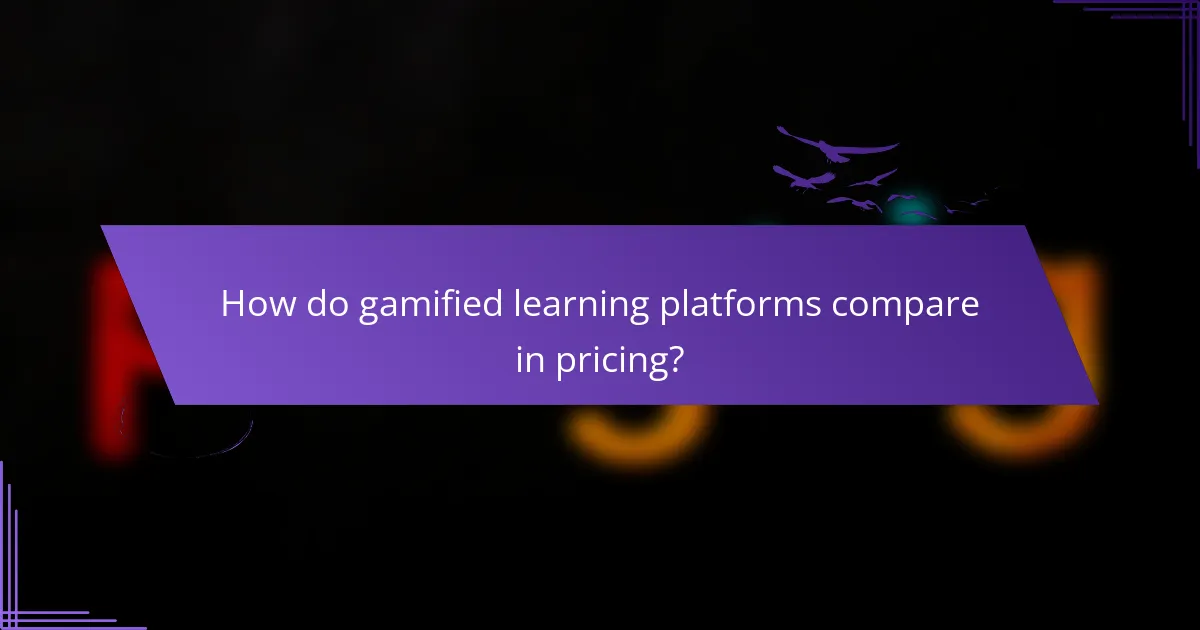
How do gamified learning platforms compare in pricing?
Gamified learning platforms vary significantly in pricing, often depending on features, user base, and subscription models. Basic versions may be free, while premium options can range from monthly fees in the low tens of USD to several hundred USD annually for larger organizations.
Subscription models of Kahoot!
Kahoot! offers several subscription models tailored to different user needs, including individual educators, schools, and businesses. The basic version is free, providing access to a limited set of features, while premium plans unlock advanced functionalities like detailed analytics and customization options.
For educators, Kahoot! offers a Pro subscription, typically priced around $10 to $20 per month, which allows for more extensive game creation and participation tracking. For schools and businesses, the pricing can escalate to $300 or more annually, depending on the number of users and additional features required.
When considering a subscription, evaluate the specific needs of your audience. For instance, if you require advanced reporting or the ability to host larger events, opting for a premium plan may be worthwhile. Always check for educational discounts or promotional offers that can reduce costs.
